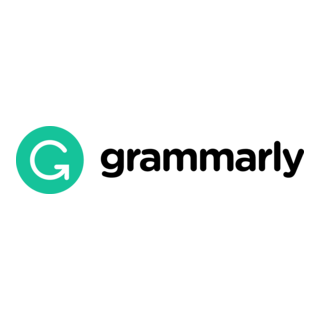The Integration of National Insight In Hidden Curriculum
 Abstract views: 482
,
Abstract views: 482
,
 PDF downloads: 306
PDF downloads: 306
Abstract
This study aims (1) to develop the material on national insight in the hidden curriculum. (2) Examining the validity, practicality, and effectiveness of the integration of national insight in hidden curriculum. The method used in this research is development research (R&D / Research and Development). This study raises based on the theory that setted up by Borg and Gall by using 9 steps in the study. The sampling in this research is using probability sampling techniques with 75 students as the sample. The data collection technique in this study is using a questionnaire. The technique that applied in this research is one sample t-test technique. The results of this study are (1) this development research is able to integrate national insight into the hidden curriculum, (2) the validity value obtained from the national insight material is 83 and is declared feasible. The practicality value obtained from the national insight material is 86%. The development of this material in the hidden curriculum was declared effective by the difference in the mean of the pretest results of 71,32 and the posttest results of 81,48. So, it can be concluded that the national insight is very feasible and effective to applied in the hidden curriculum.
Downloads
References
Al-Nur, Widya Rahmawati. “Pengembangan Hidden Curriculum Untuk Menunjang Pendidikan Anti Korupsi Di MIN 1 Banyumas.” Institut Agama Islam Negeri Purwokerto, 2019.
Arif, Dikdik Baehaqi, and Syifa Siti Aulia. “Studi Tentang Negara Pancasila Sebagai Darul Ahdi Wa Syahadah Untuk Penguatan Materi Pembelajaran Pendidikan Kewarganegaraan Di Universitas Ahmad Dahlan.” Jurnal Civics: Media Kajian Kewarganegaraan 14, no. 2 (2017): 206–17. https://doi.org/10.21831/civics.v14i2.16440.
Arikunto, Suharsimi. "Prosedur Penelitian : Suatu Pendekatan Praktik." Edisi Revi. Jakarta: PT Rineka Cipta, 2006.
Astutik, Anita Puji. "Negara Pancasila Sebagai Darul Ahdi Wa Syahadah." Journal of Chemical Information and Modeling. Vol. 53. Nizamia Learning Center, 2015.
Ferrijana, Sammy, Basseng, and Triatmojo Sejati. "Wawasan Kebangsaan Dan Nilai-Nilai Dasar Bela Negara," 2015.
Fuad, Ahmad Nur, dkk. "Pendidikan Kemuhammadiyahan". Sidoarjo, UMSIDA Press, 2012.
Hidayat, Syamsul. “Negara Pancasila Sebagai Darul ‘Ahdi Wa Al-Syahadah’ Wawasan Dan Kontribusi Muhammadiyah Bagi NKRI.” Tajdida 14, no. 1 (2016): 12–17.
Maryani, Ika, and Fitria Dewi. “Pelaksanaan Hidden Curriculum Pada Mata Pelajaran Pendidikan Al-Islam Di Sekolah Dasar.” EduHumaniora | Jurnal Pendidikan Dasar Kampus Cibiru 10, no. 1 (2018): 8. https://doi.org/10.17509/eh.v10i1.8396.
Nasir, Haedar. "Siaran Pers tanggal 2 Agustus 2017 di Jakarta," 2017.
PP. Muhammadiyah. "Negara Pancasila sebagai Darul Ahdi Wa Syahadah; Muktamar Muhammadiyah ke-47 di Makasar." Yogyakarta: Gramasurya, 2015.
Purnama, Sigit. “Metode Penelitian Dan Pengembangan (Pengenalan Untuk Mengembangkan Produk Pembelajaran Bahasa Arab).” LITERASI (Jurnal Ilmu Pendidikan) 4, no. 1 (2016): 19. https://doi.org/10.21927/literasi.2013.4(1).19-32.
Sinta Utami, Prihma. “Urgensi Internalisasi Nilai Kemuhammadiyahan Berbasis Wawasan Kebangsaan Dengan Konsep Negara Pancasila Sebagai Darul Ahdi Wa Syahadah.” Jurnal Pancasila Dan Kewarganegaraan 4, no. 2 (2019): 63–70. https://doi.org/10.24269/jpk.v4.n2.2019.pp62-70.
Syafei, Imam. “Pengembangan Bahan Ajar Pendidikan Agama Islam Berbasis Problem Based Learning Untuk Menangkal Radikalisme Pada Peserta Didik Sma Negeri Di Kota Bandar Lampung.” Al-Tadzkiyyah: Jurnal Pendidikan Islam 10, no. 1 (2019): 137–58. https://doi.org/10.24042/atjpi.v10i1.3631.
Yahya, Muhammad Slamet. “Hidden Curriculum Pada Sistem Pendidikan Sekolah Tinggi Agama Islam Negeri (Stain) Purwokerto Tahun 2013.” Jurnal Kependidikan 1, no. 1 (2013): 123–49. https://doi.org/10.24090/jk.v1i1.535.
Zulkarnain, Fauzan, Rijal Firdaos, and Heru Juabdin Sada. “Pengembangan Media Pembelajaran Qur’an Hadist.” Al-Tadzkiyyah: Jurnal Pendidikan Islam 10, no. 2 (2019): 265–74.
Copyright (c) 2021 TADRIS: Jurnal Pendidikan Islam

This work is licensed under a Creative Commons Attribution-NonCommercial 4.0 International License.
The journal operates an Open Access policy under a Creative Commons Non-Commercial 4.0 International license. Authors who publish with this journal agree to the following terms:
- Authors retain copyright and grant the journal right of first publication with the work simultaneously licensed under a
 Commons Attribution-NonCommercial 4.0 International License
Commons Attribution-NonCommercial 4.0 International Licensethat allows others to share — copy and redistribute the material in any medium or format, and adapt — remix, transform, and build upon the material.
- Authors are able to enter into separate, additional contractual arrangements for the non-exclusive distribution of the journal's published version of the work (e.g., post it to an institutional repository or publish it in a book), with an acknowledgement of its initial publication in this journal.
- Authors are permitted and encouraged to post their work online (e.g., in institutional repositories or on their website) prior to and during the submission process, as it can lead to productive exchanges, as well as earlier and greater citation of published work (see The Effect of Open Access).














